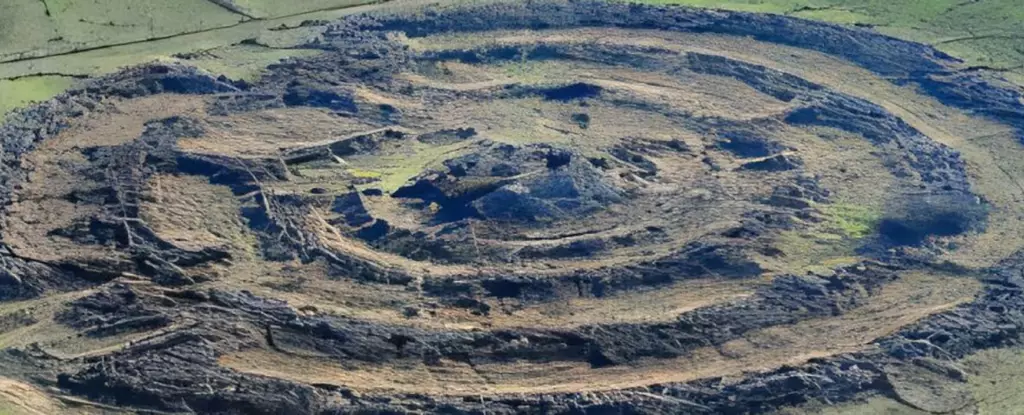Nestled within the storied landscape of the Golan Heights in southwest Syria, Rujm el-Hiri, translating to ‘Wheel of Ghosts,’ has long captured the imagination of archaeologists and historians alike. Initially, the site was celebrated as a possible astronomical observatory due to its apparent alignments with celestial bodies. This understanding instigated a series of extensive studies aimed at unlocking the secrets embedded within its ancient stones. However, a recent comprehensive research project has surfaced intriguing questions about the site’s original purpose, leading to a re-evaluation of what this ancient structure truly represents.
Collaborative investigations led by researchers from Tel Aviv University and Ben-Gurion University of the Negev employed an array of innovative techniques to probe the geological and historical integrity of Rujm el-Hiri. The application of geomagnetic analysis—a method that scrutinizes the residual magnetic signals preserved within soil and rock— has revealed that the structure’s alignment is not as static as previously presumed. Evidence suggests that the site has undergone significant positional shifts over the millennia, challenging its classification as an astronomical observatory.
The researchers discovered that the geological scaffolding of the Rujm el-Hiri region has evolved through tectonic activities, leading to the counterclockwise rotation and lateral drift of the site. These findings are not merely academic; they provide valuable insight into how geological processes can transform human-made structures over time. This newly acquired data serves as a vital cog in understanding the broader implications of the megalith’s history—a paradigmatic shift from seeing it solely as an astronomical construct to recognizing it as a monument shaped by the intricate dance of geology and human intent.
Chronological Insights: Construction and Evolution
Dating back to approximately 4500 BCE, Rujm el-Hiri’s origins are shrouded in mystery. Researchers today recognize that the site likely saw progressive constructions and modifications extending into the Bronze Age, suggesting a dynamic history of use and re-use. Previous notions that the structure functioned as a fortification or as a communal space are gaining traction as the present study highlights its complexity over time. The numerous concentric circles formed from basalt stone and the central cairn suggest not just static rituals but a continually evolving landscape reflective of both functional needs and ritualistic significance.
This multidimensional narrative where one structure evolves into an entirely different form resonates through many archaeological sites, prompting a deeper understanding of how ancient societies interacted with their environments and utilized megalithic structures. By showcasing the propensity for adaptation and growth in its make-up, Rujm el-Hiri emerges as a testament to ancient ingenuity.
Technological Innovations in Archaeological Research
The integration of remote sensing and advanced geological reconstruction methods marks a significant advancement in archaeological research, notably within the Southern Levant region. The amalgamation of GPS data and paleomagnetic studies enables a more holistic understanding of not only Rujm el-Hiri but similar sites worldwide. The innovative approach adopted by these researchers instills the possibility of refining investigative methodologies for understanding ancient ruins, going beyond the limitations imposed by surface-level excavations.
As researchers continue to unravel the layers of past civilizations, these technological applications may serve as vital frameworks for discovering previously concealed sites. The potential for Artificial Intelligence to assist in identifying similar human-made structures via satellite images is an exhilarating prospect, suggesting that the future of archaeology could intertwine rich historical narratives with state-of-the-art technological advancements.
The implications of this study extend well beyond the Golan Heights, issuing an invitation to archaeologists to scrutinize megalithic structures globally. The knowledge gleaned from Rujm el-Hiri underscores the significance of contextual exploration in revealing human history and provides a unique lens through which to observe cultural and structural adaptations throughout time. It is crucial for scholars to embrace these emerging methodologies to peel back the layers of history and engage with humanity’s ever-evolving relationship with architecture and the environment.
As we stand at the brink of rediscovery, the majestic site of Rujm el-Hiri serves not only as a relic of a long-lost civilization but also as a beacon for future research endeavors, hinting at the multitude of stories still buried beneath the earth’s surface, waiting to take their place in the annals of archeological history.

Leave a Reply